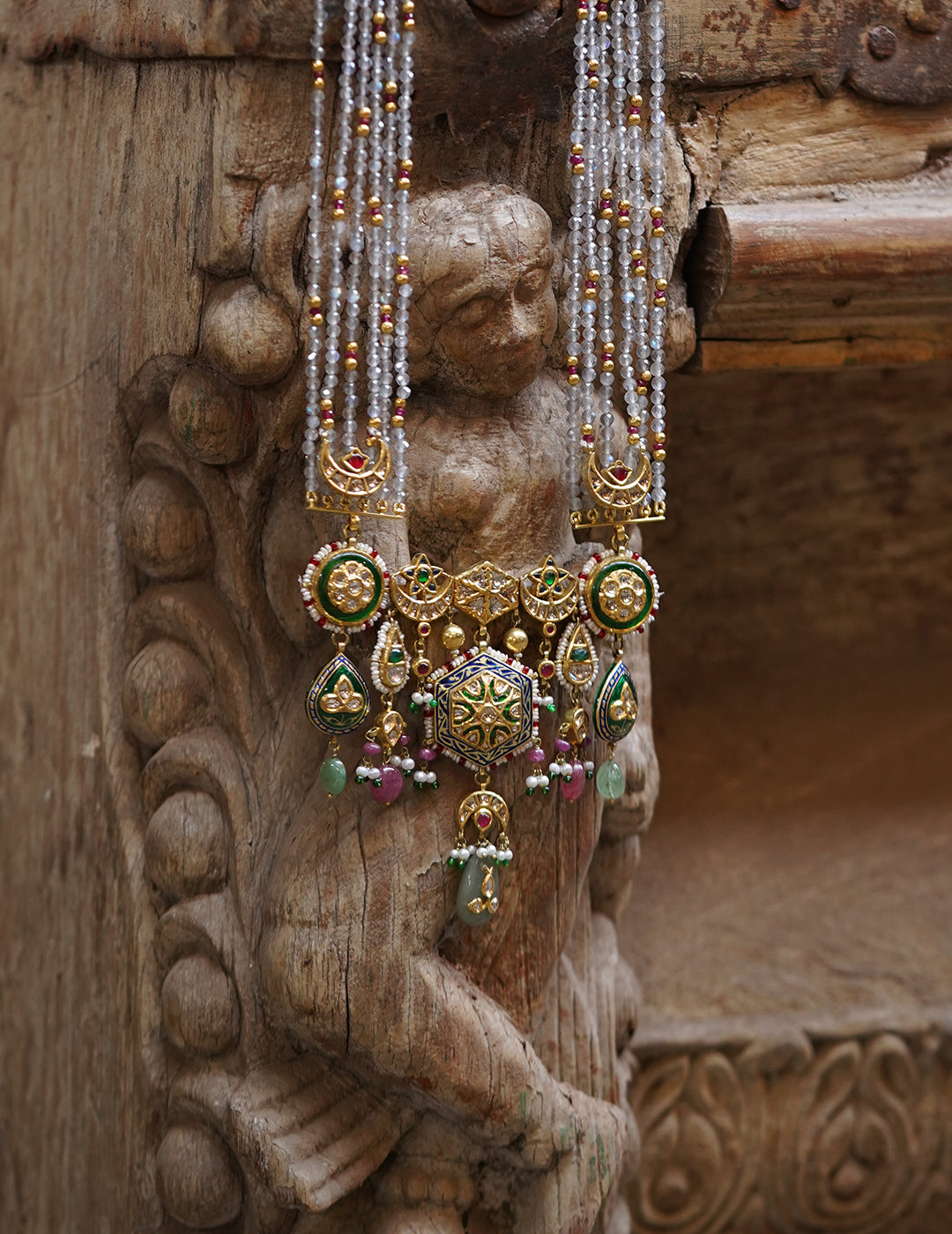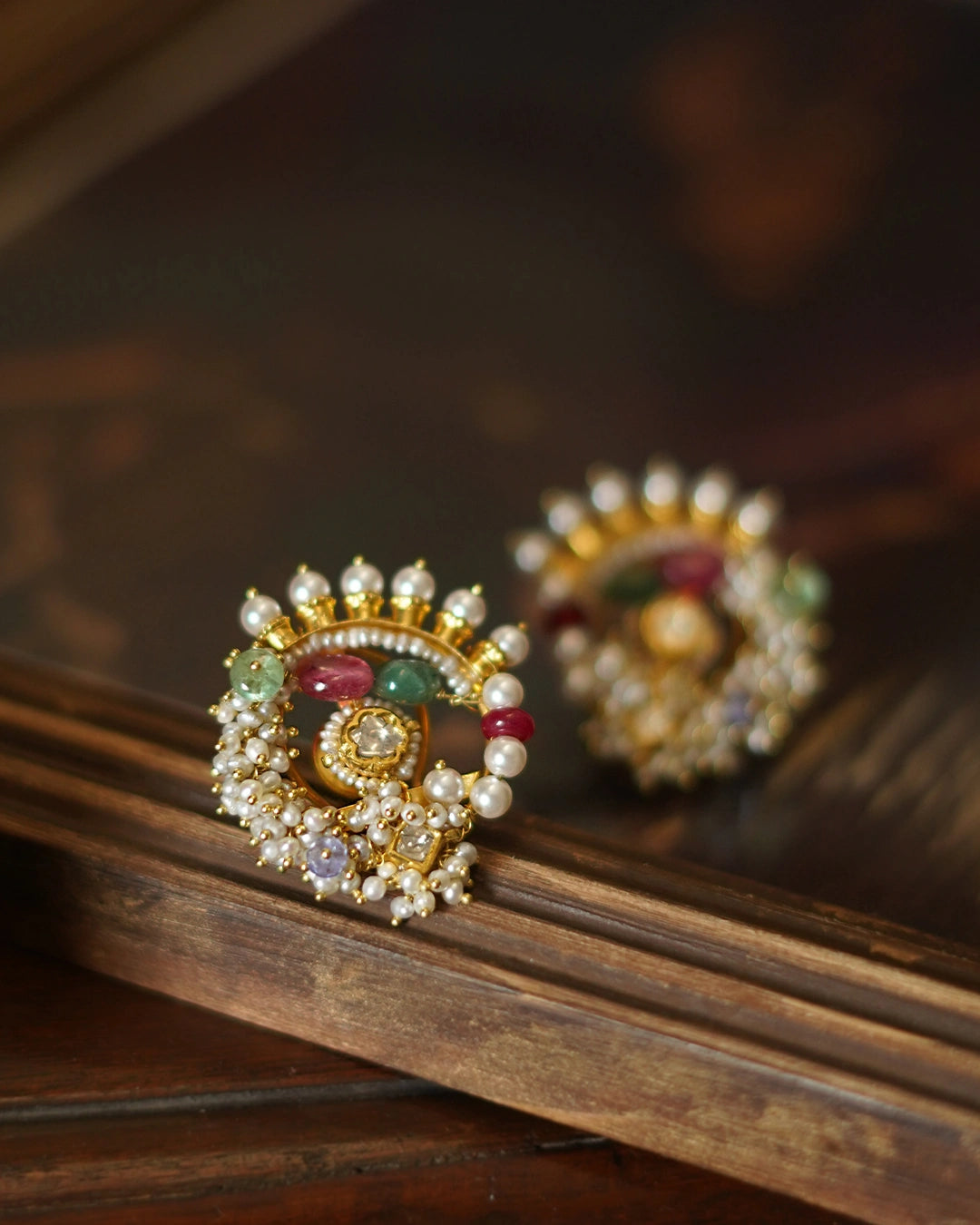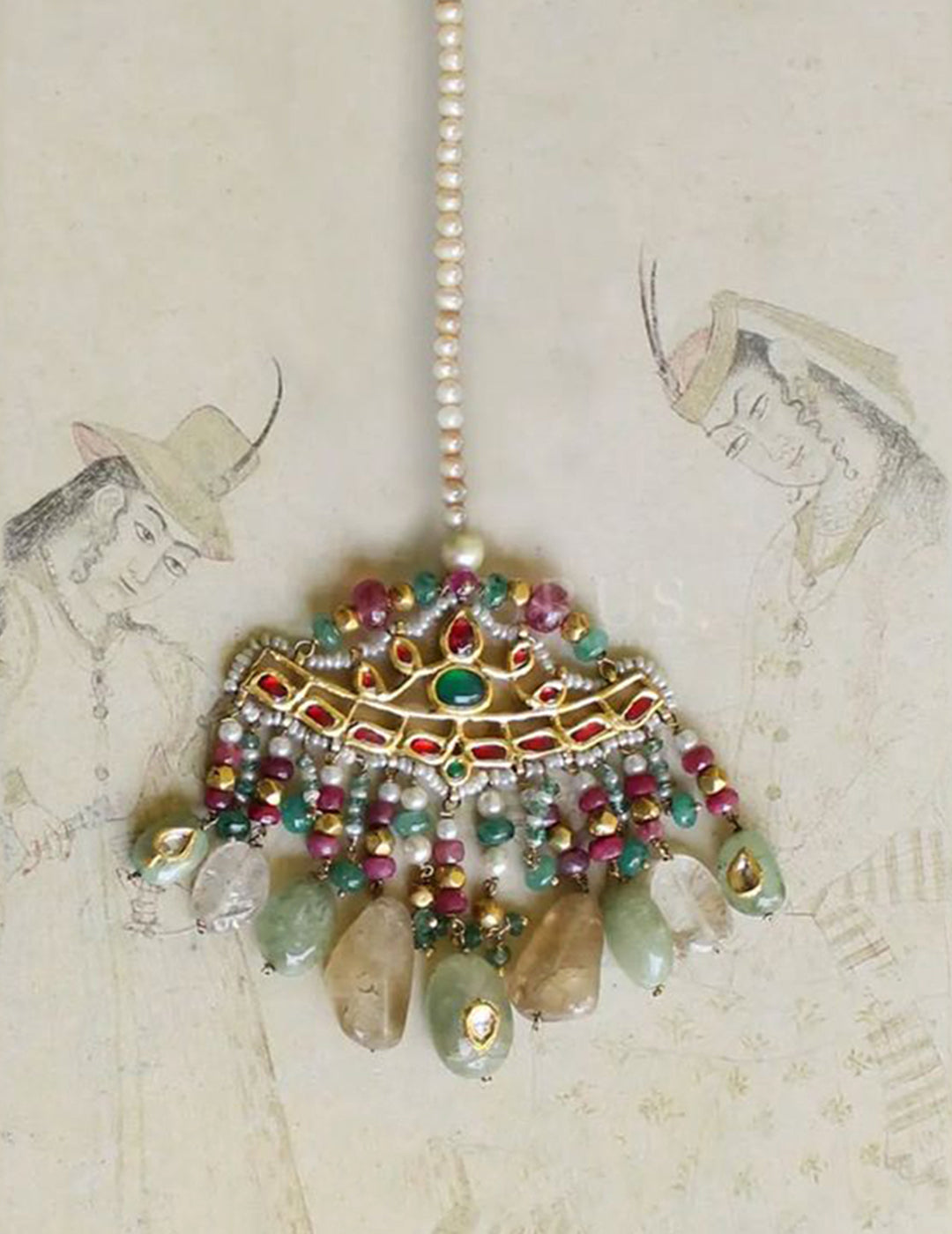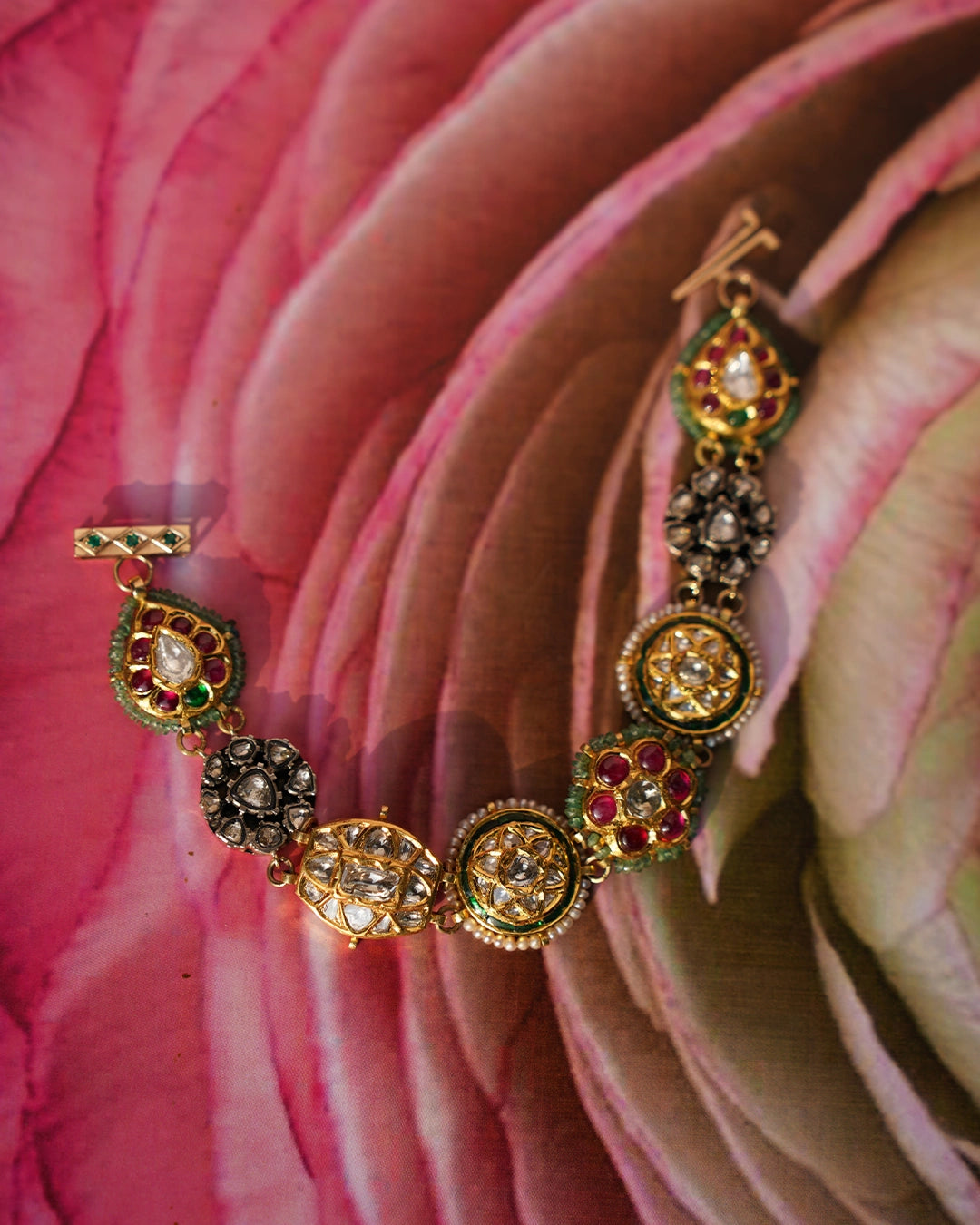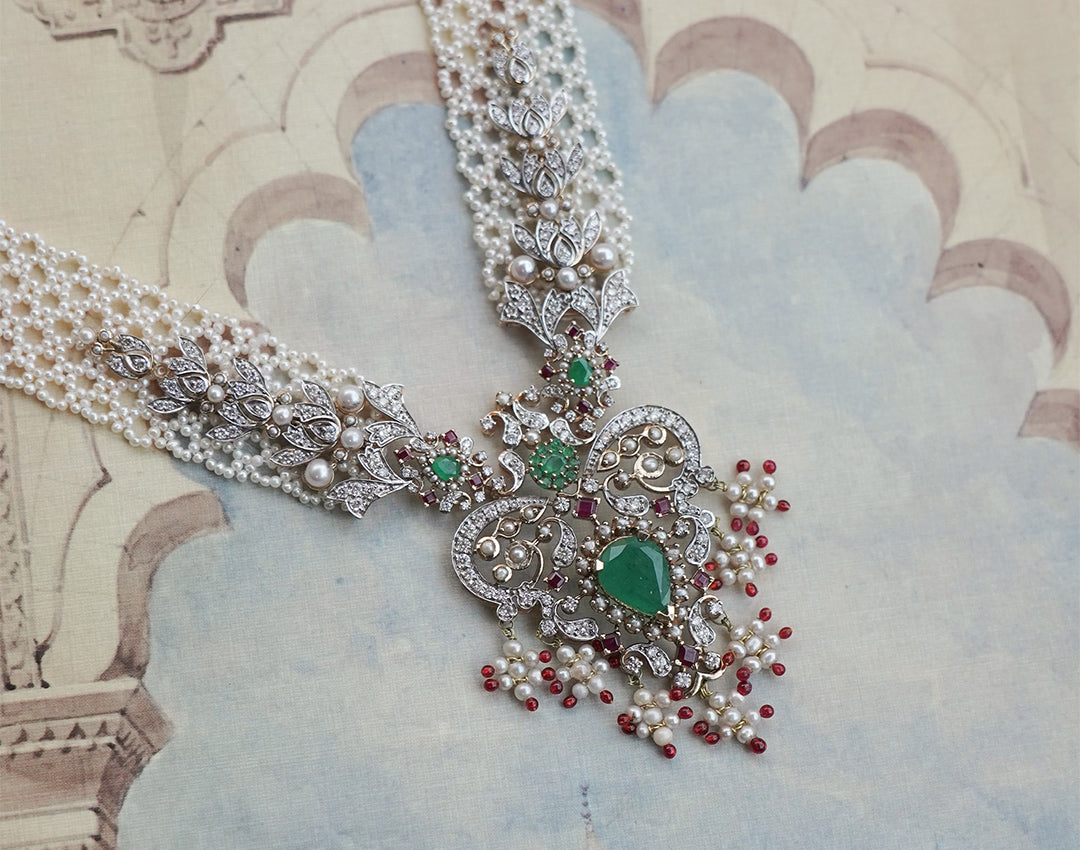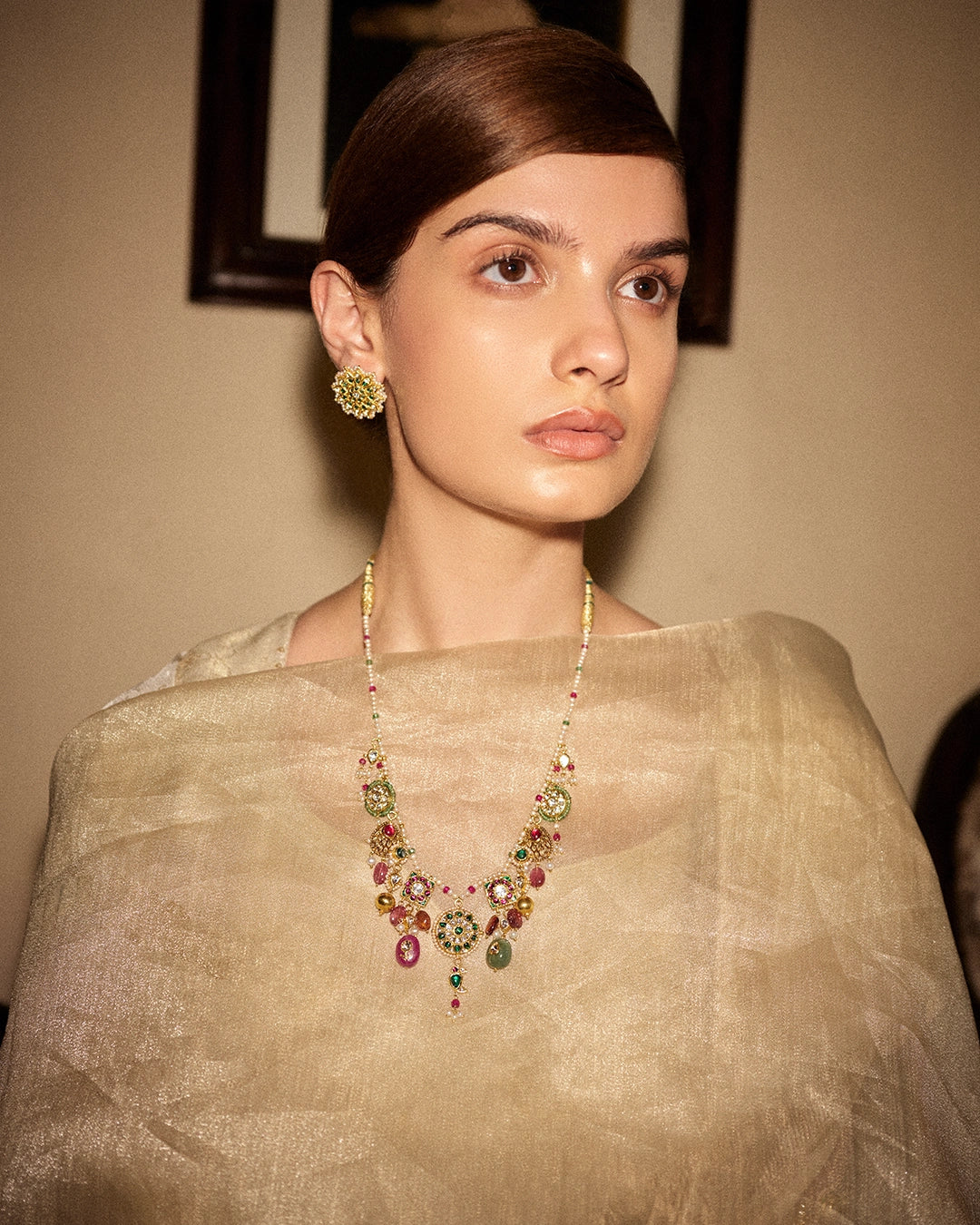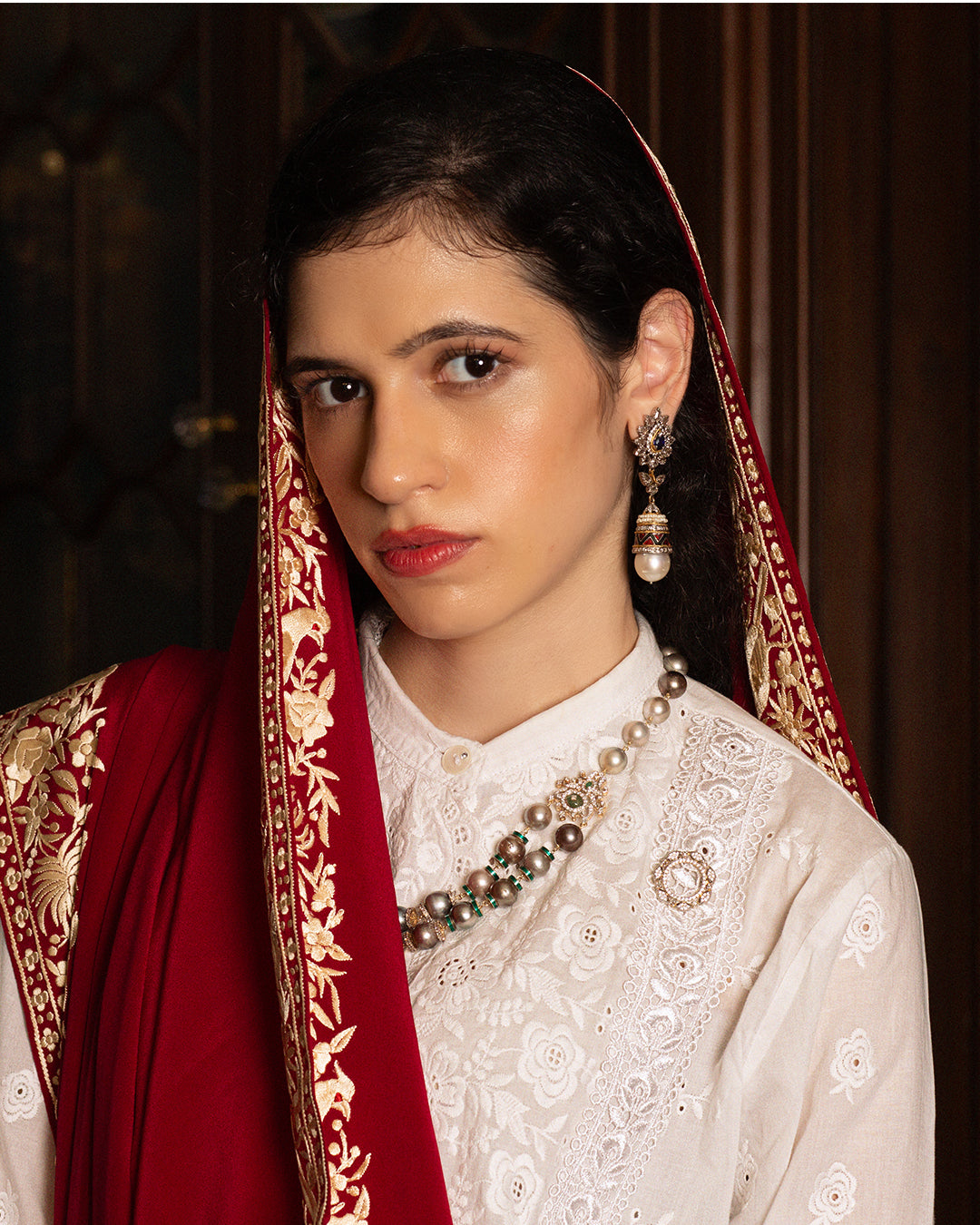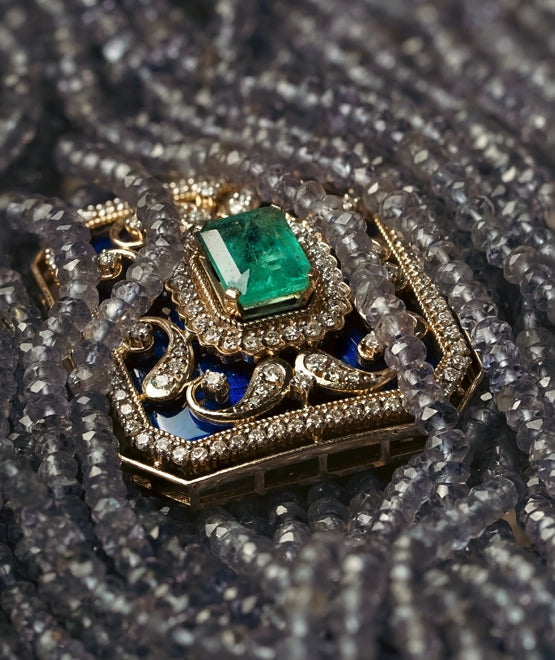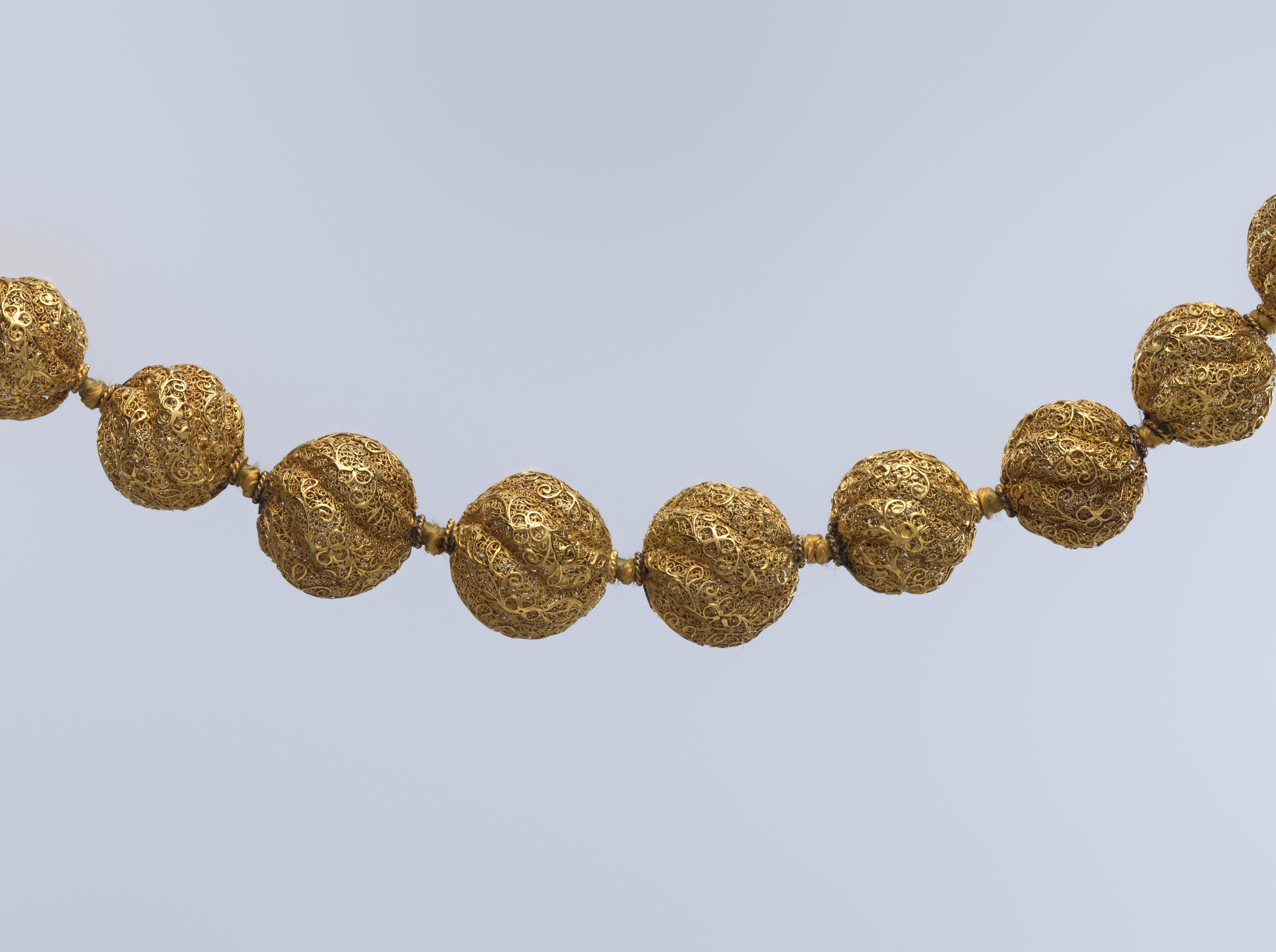Gold jewelry crafted in intricate metalwork; fine strands of gold used to make elaborate, eye-catching designs—what you’re looking at here, is Filigree, an elaborate form of jewelry-making that is said to have originated around 3000 BC in Mesopotamia, as dictated by archaeological finds.
The word filigree finds its origins in Latin—filum meaning wire; grannum meaning grain, owing to the use of small metal balls along with the wire used to make elaborate motifs. In northern and central India, this form of making gold jewelry is known by the Persian term tarkashi kam—tar meaning wire; tarkash meaning a wire drawer.
A Brief Background of Filigree Gold Jewelry
Wire has long been used in jewelry in India because it is one of the most basic types of metal available to jewelers. Early jewelers formed strips of sheet metal into coils and tightly rolled them to produce a wirelike form that was not true wire. Very long lengths of solid metal wire became possible with the invention of the drawplate, a rectangular steel plate drilled with graduated-size holes through which the wire is pulled to reduce its section while simultaneously increasing its length.
Filigree gold jewelry pieces date back more than 5,000 years to Mesopotamia and Ancient Greece. However, it took over 6,500 years for filigree gold jewelry to become popular. It became popular in French fashion from the late 1600s to the 1800s, but it really took off during the Art Deco period, with detailed scrollwork and lacy flourishes creating gorgeous motifs in all types of jewelry. Pieces from this era are highly sought after as exceptional works of jewelry and art.

In the 19th century, filigree was a speciality of the Genoese region, on the north-west coast of Italy. The villages around Genoa made gold and silver filigree jewellery in traditional styles, mainly for the local population. Goldsmiths in the city of Genoa itself aimed their filigree at a wider audience, and exhibited and sold their products widely throughout Europe.
This earring was bought for £2 4s. (the pair) as part of the Castellani collection of Italian Peasant Jewellery at the International Exhibition, Paris, 1867.
Source and image courtesy: Victoria and Albert Museum

This cross-shaped filigree pendant is typical of the jewellery worn in the Salamanca region. Salamanca was famous for its filigree work in the 19th century, and silver filigree is still widely available there today.
The original owner would have worn this cross on a ribbon, strung through the loop on the back of the top segment, and tied at the back of her neck. It was bought for £1 2s. at the International Exhibition, London, 1872.
Source and image courtesy: Victoria and Albert Museum
The filigree gold jewelry technique is appealing to both jewelers and their clients because it uses a small amount of precious metal to create a large object, which is important in India where precious metal jewelry is sold by weight. The disadvantage is that, despite being a labor-intensive job, a skilled artisan would still earn less than the global average.
Unwinding a Filigree Gold Jewelry Piece
In filigree work, three types of wire are required, each with its own specific function. The outer frame wire is the heaviest (14 gauge) and has a square cross-section. The frame wire defines the basic design and holds everything in place.
The second wire is a lighter square wire (18–20 gauge), which divides the area within the outer frame into small components. It defines the design subject's main lines, such as a flower, leaf, or creeper pattern.
The third wire is made of two cords of 36 gauge round wire spiraled together, then flattened by hammering on an anvil or passing through rolling mill rollers. The thus-formed third wire is used to make all of the various types of units that are utilized to fill the empty spaces in the frames.
Making a Filigree Gold Jewelry Piece
Filigree is the delicate weaving and twisting of thin strips of metal to create incredible texture and detail. Making filigree by hand is a methodical and time-consuming process that begins with elongating metal into thin, threadlike strips. This part takes a lot of patience, and many jewelers still do it by hand, even though there are machines that can help create these strips.
After the strips have been formed, the jeweler then works with one piece of metal wire at a time—they will bend and distort the thread into the preferred shape and design. The finished metal shape is then soldered to the metal base piece. This process is repeated until the entire design is finished.

The main constituent of this type of necklace, described as a douggeh when it was acquired in 1909, are the large filigree beads. They are made of open filigree in this example, although beads of sheet silver with applied filigree or other decoration are also common. They were worn by both Jewish and Muslim women.
Source and image courtesy: Victoria and Albert Museum
Popular Filigree Gold Jewelry Objects
Filigree is used to make all types of gold jewelry, including bangles, brooches, bracelets, earrings, ear tops, hair pins, coat pins, necklaces, pendants, chains, rings, tie pins, and buttons.

Image courtesy: The Met Museum

Image courtesy: The Met Museum
Non-jewelry items include pan-leaf boxes, lamp black or kajal containers, vermillion pigment boxes, spice boxes, cardamom seedboxes, trays, scent containers, rosewater sprinklers, miniature imitations of Hindu temples, and deity chariots.




